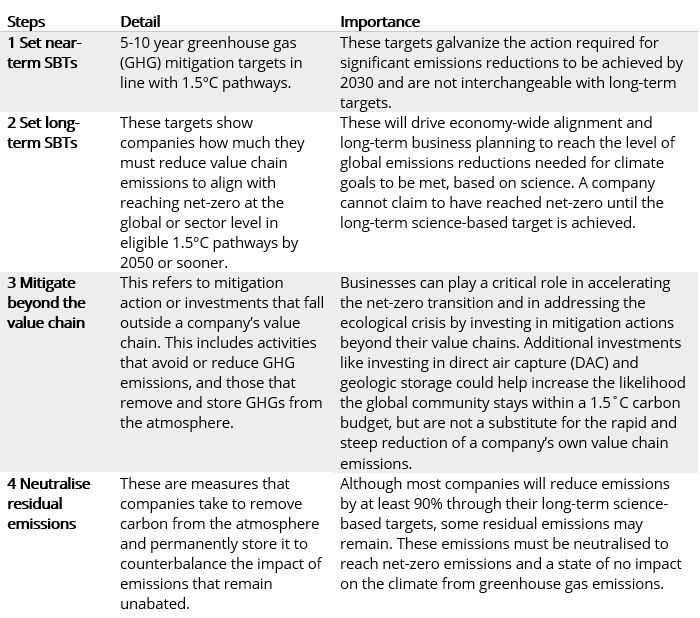Is this the end of net-zero greenwash?
We know the facts: if we want to limit global temperature increases to 1.5°C above pre-industrial levels, a clear path to decarbonization is needed by 2050. In the past couple of years many companies have committed to net-zero targets, with these corporate targets collectively covering 25% of the world’s CO2 emissions and over 50% of global GDP. But, up to now, there has still not been a clear definition of what “net-zero” means in a corporate context, nor a description of what the emission mitigation strategies should be to achieve climate stabilization for individual business. Without adherence to a common definition, net-zero targets will be inconsistent, and their collective impact greatly limited.
The Science Based Targets initiative (SBTi), with the help of an independent Expert Advisory Group[1], has created the first science-based framework for companies to set net-zero targets, the Net-Zero Standard. It applies to all companies with more than 500 employees that wish to commit to net-zero through the SBTi.
Net-Zero Standard conditions
The Standard defines corporate net-zero as reducing Scope 1, 2, and 3 emissions to zero or to a residual level that is consistent with reaching net-zero emissions at the global or sector level in eligible 1.5°C-aligned pathways. This is followed by neutralizing any residual emissions at the net-zero target year and any greenhouse gas emissions released into the atmosphere thereafter.
The Net-Zero Standard introduces two conditions that need to be met by companies setting their corporate net zero targets:
1. Emission reduction through setting both near- and long-term science based targets (SBTs) and carbon reduction inside a company’s value chain is the top priority.
2. Residual emissions removal outside the companies’ value chain is a secondary priority but also important
The Standard lays out a step-by-step route to implementation, as demonstrated in the figure below.
Figure 1: Key elements of the Net-Zero Standard
Figure 2: Details of key elements of the Net-Zero Standard
The main change from previous net-zero strategies
Businesses can play a critical role in accelerating the net-zero transition and in addressing the ecological crisis by investing in mitigation actions beyond their value chains. The main change from the previous net-zero strategy outline is that decarbonizing a company’s value chain through science-based targets and reaching net-zero emissions by 2050 is increasingly becoming the minimum societal expectation on companies. It is also highlighted that companies main focus needs to be emission reductions not purely “off-setting” projects. However off-setting projects have the potential to be complimentary to reaching net-zero, as actions that mitigate emissions can accelerate the transition but should not be the key driver in a net-zero strategy.
At Oakdene Hollins, we see this as the change needed to match the current global ambition to become net-zero. We particularly welcome the inclusion of Scope 3 emissions as a vital part of becoming net-zero, moving the ambition on from focusing only on the transition to renewable energy, and incorporating resource efficiency and supply chain engagement to cut down emissions. The time is ripe for companies to commit to the Net-Zero Standard, particularly given the recent announcement by UK Chancellor Rishi Sunak that he will require all UK financial institutions and listed firms to publish strategies on how they will transition to net-zero by 2050. We look forward to supporting businesses and organisations to develop their carbon baseline, and to navigate a net-zero business world.


